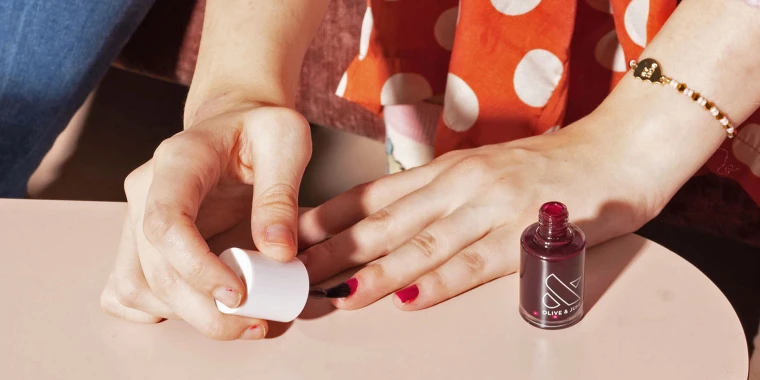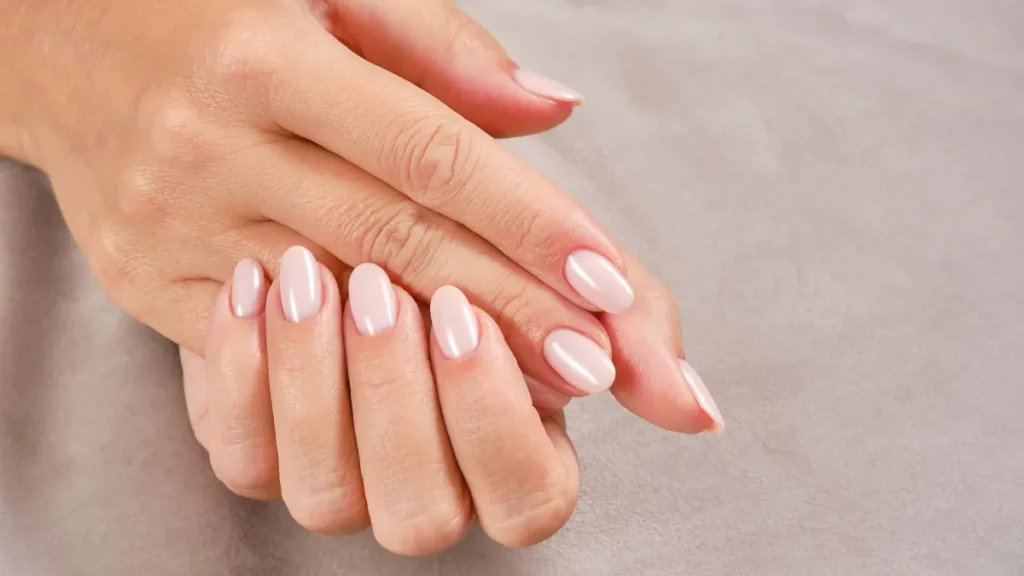Dip nails have become increasingly popular for their durability, ease of application, and professional finish. This article explores how you can achieve salon-quality manicures at home using DIY dip nail kits. From preparation and application to maintenance and removal, discover everything you need to know about dip nails to achieve flawless results on a budget.
Table of Contents
What are Dip Nails?
Dip nails, also known as SNS nails (Signature Nail Systems), are a type of manicure that involves dipping your nails into colored powder to create a durable and long-lasting finish. Unlike traditional nail polish or gel manicures, dip nails require no UV light for curing and can be applied quickly with minimal mess. The process typically involves applying a base coat, dipping the nails into the powder, and sealing with a top coat for added strength and shine.
Benefits of DIY Dip Nails
- Durability: Dip nails are known for their durability and resistance to chipping and cracking, making them ideal for individuals who want long-lasting manicures without frequent touch-ups.
- Easy Application: DIY dip nail kits come with step-by-step instructions that make it easy for beginners to achieve professional-looking results at home. The process involves simple dipping and brushing techniques that do not require special skills or tools.
- Variety of Colors and Finishes: Dip nail powders come in a wide range of colors, finishes, and effects, allowing you to create custom manicures that suit your style and preferences. From matte to shimmer and everything in between, there’s a dip nail powder for every occasion.
- Healthier Alternative: Unlike acrylic nails, dip nails do not require harsh chemicals or strong odors during application. Many dip nail powders are formulated with vitamins and minerals to promote healthy nail growth and strength.
- Cost-Effective: While professional dip nail services can be costly, DIY dip nail kits are affordable alternatives that provide salon-quality results at a fraction of the price. Investing in a quality dip nail kit can save you money in the long run.
- Quick Drying: Unlike traditional nail polish that can take time to dry, dip nails dry almost instantly after application, reducing the risk of smudges or smears.
- Easy Removal: Removing dip nails at home is a straightforward process that involves soaking the nails in acetone or using nail wraps to dissolve the powder layers gently. This allows for easy removal without damaging the natural nails.

How to Do DIY Dip Nails at Home
Achieving salon-quality dip nails at home is easier than you think. Follow these steps for a flawless DIY manicure:
Step 1: Prepare Your Nails
Start by shaping and buffing your nails to create a smooth surface for the dip powder. Push back cuticles and remove any excess oil or residue from the nails using a nail cleanser or alcohol wipe.
Step 2: Apply a Base Coat
Apply a thin layer of base coat to one nail at a time. Avoid getting the base coat on your cuticles or skin. Immediately dip the nail into the colored powder at a 45-degree angle and tap off any excess powder.
Step 3: Repeat the Dipping Process
Repeat the dipping process on each nail, ensuring even coverage and smooth application. If necessary, apply a second coat of base coat and dip again for deeper color intensity.
Step 4: Seal with Top Coat
Once all nails are dipped and dried, apply a generous layer of top coat to seal and protect the dip powder. Allow the top coat to dry completely before applying cuticle oil or hand lotion to nourish the skin around your nails.
Step 5: Cleanup and Maintenance
Clean up any excess powder or polish around the nails using a brush dipped in acetone or nail polish remover. To maintain your dip nails, apply cuticle oil regularly and avoid using your nails as tools to prevent lifting or damage.
Tips for Successful DIY Dip Nails
Achieving salon-quality results with DIY dip nails requires attention to detail and proper technique. Here are additional tips to help you master the art of dip nails at home:
Proper Nail Preparation
Before starting the dip nail application process, ensure your nails are clean, dry, and free of any polish or oils. Use a gentle nail file to shape your nails and a buffer to smooth the surface. Push back cuticles carefully to create a clean canvas for the dip powder application. Proper nail preparation is essential for ensuring the longevity and flawless finish of your DIY dip nails.
Layering Technique
To achieve a smooth and even application of dip powder, use a gentle layering technique. Apply thin, even coats of base coat and dip powder, ensuring each layer is fully dried before applying the next. Avoid applying thick layers of product, as this can lead to uneven texture and longer drying times. Patience and attention to detail during the layering process will result in a professional-looking manicure.
Use a Dip Powder Activator
Most DIY dip nail kits include a dip powder activator that helps to harden and seal the dip powder layers. Apply the activator according to the kit instructions after the final layer of dip powder and allow it to dry thoroughly. The activator plays a crucial role in enhancing the durability and strength of your dip nails, ensuring they withstand daily activities without chipping or lifting.
Seal with a High-Quality Top Coat
After applying the dip powder and activator, seal your DIY dip nails with a high-quality top coat. The top coat adds shine, seals in the color, and provides an extra layer of protection against wear and tear. Choose a top coat that is specifically formulated for dip nails to ensure compatibility and optimal results. Allow the top coat to dry completely before engaging in any activities to prevent smudging or denting.

Common Mistakes to Avoid
While DIY dip nails are relatively straightforward to apply, there are common mistakes that can affect the final result. Avoid these pitfalls to achieve flawless dip nails:
Overbuffing the Nail Surface
Excessive buffing of the natural nail surface can weaken the nail bed and lead to damage over time. Use a gentle buffer to smooth out ridges and create a lightly textured surface for better adhesion of the base coat. Avoid overbuffing, as this can thin the nails and compromise their strength.
Skipping the Proper Application Technique
Follow the application technique recommended by the DIY dip nail kit manufacturer for optimal results. Skipping steps or applying products out of order can affect the durability and appearance of your dip nails. Take the time to read and understand the instructions provided with your kit to ensure a successful manicure experience.
Using Incorrect Nail Products
Using products that are not specifically designed for dip nails can result in subpar results and potential damage to your natural nails. Invest in a reputable DIY dip nail kit that includes base coat, dip powder, activator, and top coat formulated for compatibility and performance. Quality products contribute to the longevity and aesthetic appeal of your DIY dip nails.
Rushing the Drying Process
Proper drying time is crucial for achieving long-lasting DIY dip nails. Rushing the drying process by applying too many layers of product at once or not allowing sufficient drying time between coats can lead to smudges, dents, or uneven texture. Be patient and allow each layer of base coat, dip powder, activator, and top coat to dry thoroughly before proceeding to the next step.
Troubleshooting Tips
If you encounter any issues during the DIY dip nail application process, here are some troubleshooting tips to help you achieve a flawless finish:
Patchy or Uneven Coverage
If the dip powder application results in patchy or uneven coverage, gently buff the affected areas with a nail buffer to smooth out the texture. Apply an additional thin layer of base coat and dip powder to build up color intensity and ensure even coverage across all nails.
Lifting or Peeling
To prevent lifting or peeling of dip nails, ensure proper nail preparation and application technique. Avoid applying products too close to the cuticle or skin, as this can cause lifting over time. Use a cuticle pusher to gently push back cuticles and create a clean margin between the dip powder and skin for better adhesion.
Dull or Matte Finish
If your DIY dip nails appear dull or matte after application, apply a glossy top coat to enhance shine and seal in the color. Ensure the top coat is applied evenly across all nails and extends to the edges for a polished and professional finish.
Conclusion
DIY dip nails offer a convenient and affordable solution for achieving salon-quality manicures at home. With the right tools, techniques, and products, you can create beautiful and durable nail enhancements that enhance your natural nails’ strength and appearance. Whether you’re new to dip nails or looking to refine your skills, embrace the versatility and creativity that DIY dip nails provide for a personalized and polished manicure experience. Enjoy experimenting with different colors, designs, and finishes to elevate your nail game and express your unique style effortlessly.

FAQs
Q: How long do DIY dip nails last?
A: DIY dip nails can last up to 2-4 weeks, depending on the application technique and proper nail care practices.
Q: Can I repair chipped dip nails at home?
A: Yes, you can repair chipped dip nails at home by gently buffing the affected area and applying a small amount of base coat and dip powder to blend seamlessly.
Q: Are DIY dip nails damaging to natural nails?
A: When applied and removed correctly, DIY dip nails are generally less damaging to natural nails compared to acrylic nails. Avoid overbuffing or picking at the dip powder to minimize damage.
Q: Can I use dip nail powders for nail extensions?
A: Dip nail powders are primarily designed for overlaying natural nails. For nail extensions, consider using a dip system specifically formulated for building length and strength.
